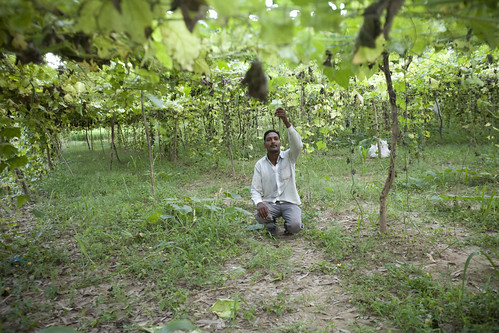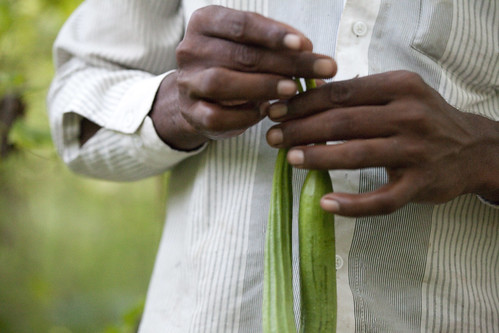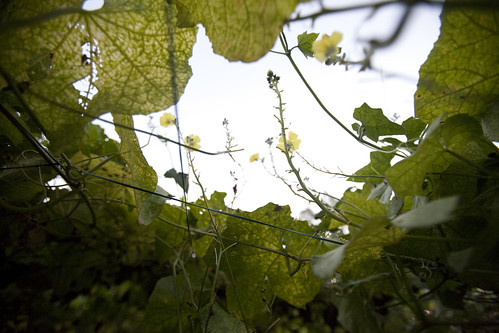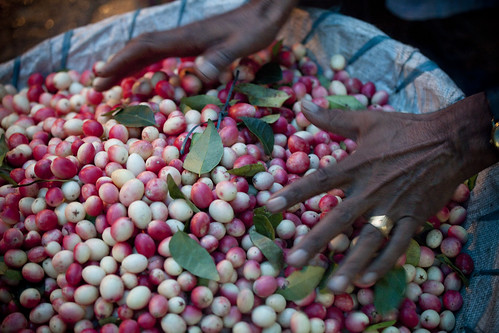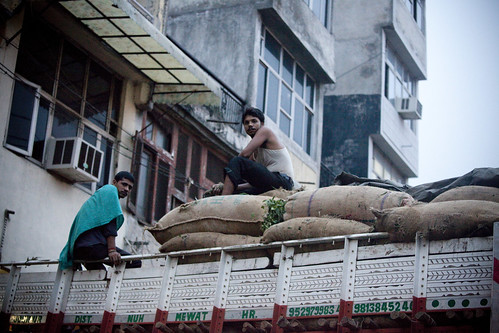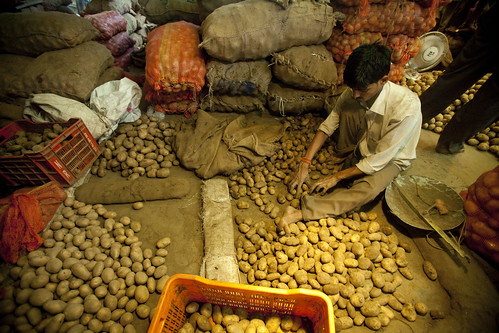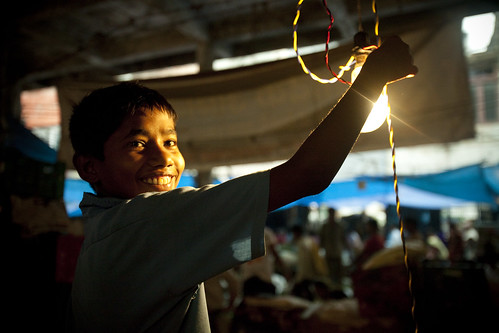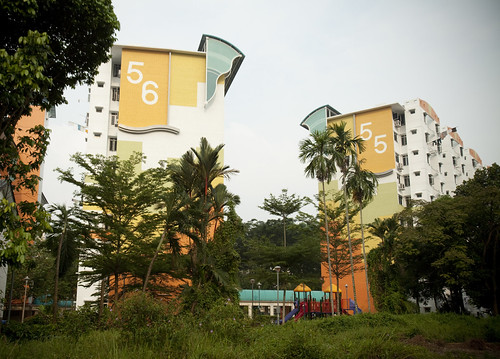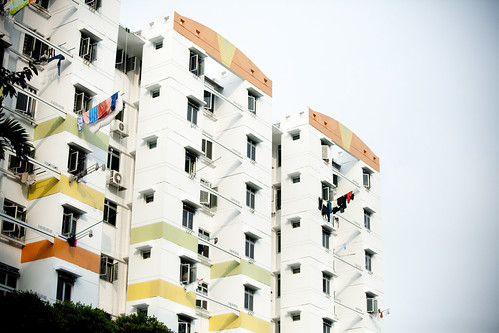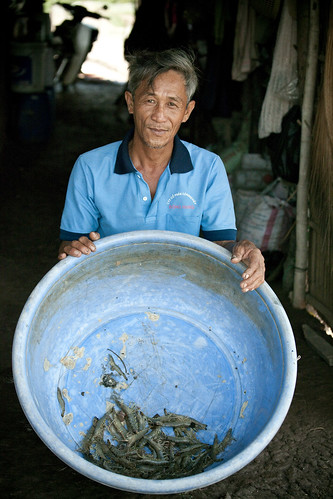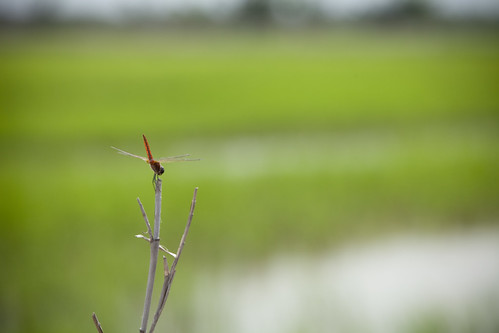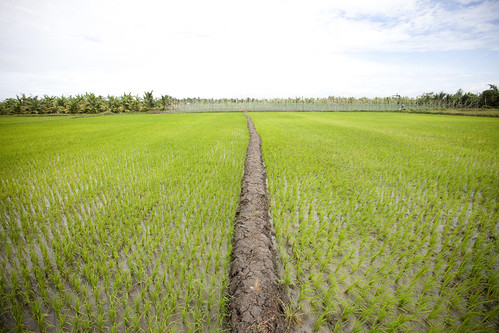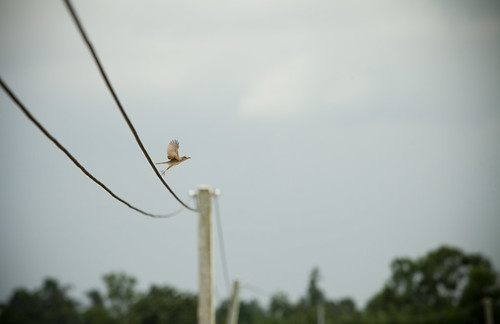This post was written for the Carnival of Journalism debate on the role of online video in journalism. I'm taking a very pragmatic approach, looking into the workflow within a print newsroom. Please feel free to give constructive criticism and tell me whether you've found better strategies in working with video.
When in a newsroom, editorial decisions are difficult, especially when you work for a daily newspaper and resources for video are tight. Having had to make those decisions while heading video operations for The Wall Street Journal in Asia, I’ve had to figure out ways to allocate resources. When does it make sense to really go all out on a story? What kind of video can add value in what kind of scenario? Here’s a thought.
Categories
To help one get an overview of how we could build out video operations at newspapers it might be good to look at the spectrum of videos newspapers do offer at this point in time. On some level, the Internet gave newcomers in video, such as newspapers, the opportunity to be experimental and break out of what had become a somewhat formulaic approach to video (See Charlie Brooker’s spoof news story as an example:http://www.youtube.com/watch?v=YtGSXMuWMR4). It liberated the format somewhat, giving videographers the chance to dabble in various genres and possibly modify them. Here are a few categories I’ve found online (click to enlarge):
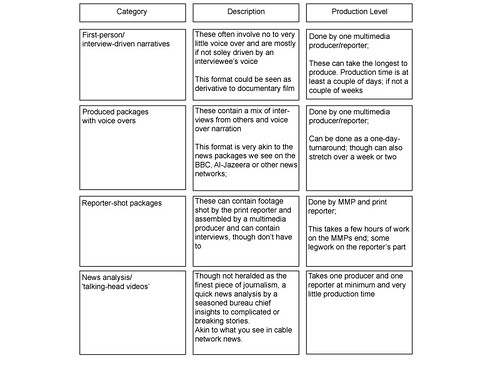
Decision Making
It’s difficult to determine which kind of video to do when. Ideally, we’d all be spending weeks with a character at a time to produce a nice 15-minute first-person narrative, but that’s not always possible. And not every editor wants to pay for that.
The system below is one based on deadlines. Please note that some of the most important questions here -- how important is this story? How visual is this story? How much access do I have? -- need to be weighed with each story and are a bit harder to put into a ‘template’ like the one below (I will try to do a float chart one of these days detailing these decisions, somebody please kick my butt so I'll do it).
It’s an important story but when is it due?
1.) It’s due now!
The most value added at this point is quite possibly news analysis videos.
When the Japan earthquake happened, the ABC correspondent in Tokyo was on air for hours on end. Al-Jazeera was streaming footage and photos they could find with reporters talking about what they saw. We put out breaking news videos
2.) We have about a week to go before this publishes:
This answer might prompt more questions: how much access do we have? How many resources can we allocate to this story, i.e. how much money do we have available? Depending on the answers of those questions we could then opt for either a video package or a reporter-shot package.
3.) We have AGES til this publishes:
In this case it we could finally try to a first person package or a really extended package.
Proselytizing the Idea of Multi-platform Journalism
Perhaps crucial for this to work is to engage reporters in the print newsroom in multimedia storytelling, both as shooters themselves but also as people who start thinking about stories on various platforms. None of the above are really possible unless we know about stories in advance and can evaluate whether a story has ‘video potential’ or not. Small experiences a reporter has with doing his or her own video can lead to a change of mind that later translates into him or her calling a multimedia producer earlier to produce a story.
See Andrew Lih and my explorations of how to teach reporters video journalism here:
http://www.andrewlih.com/blog/2011/10/01/fiveshotpattern/
Conclusion
Striking a balance between daily demands and enterprising journalism is hard, but both are needed and video can be a strong medium for both. I suppose until every newsroom has unlimited budgets for every form of journalism -- from videos to infographics to news applications and articles -- I suppose this could be a good interim strategy to determine when it's feasible and sensible to produce a video at a print organization. Print journalism is still the fastest -- and cheapest -- medium in which to produce and consume information and until we have the luxury of having the resources to train, equip and financially enable reporters to be multiplatform journalists, I think a model like this might be helpful.
When in a newsroom, editorial decisions are difficult, especially when you work for a daily newspaper and resources for video are tight. Having had to make those decisions while heading video operations for The Wall Street Journal in Asia, I’ve had to figure out ways to allocate resources. When does it make sense to really go all out on a story? What kind of video can add value in what kind of scenario? Here’s a thought.
Categories
To help one get an overview of how we could build out video operations at newspapers it might be good to look at the spectrum of videos newspapers do offer at this point in time. On some level, the Internet gave newcomers in video, such as newspapers, the opportunity to be experimental and break out of what had become a somewhat formulaic approach to video (See Charlie Brooker’s spoof news story as an example:http://www.youtube.com/watch?v=YtGSXMuWMR4). It liberated the format somewhat, giving videographers the chance to dabble in various genres and possibly modify them. Here are a few categories I’ve found online (click to enlarge):

Decision Making
It’s difficult to determine which kind of video to do when. Ideally, we’d all be spending weeks with a character at a time to produce a nice 15-minute first-person narrative, but that’s not always possible. And not every editor wants to pay for that.
The system below is one based on deadlines. Please note that some of the most important questions here -- how important is this story? How visual is this story? How much access do I have? -- need to be weighed with each story and are a bit harder to put into a ‘template’ like the one below (I will try to do a float chart one of these days detailing these decisions, somebody please kick my butt so I'll do it).
It’s an important story but when is it due?
1.) It’s due now!
The most value added at this point is quite possibly news analysis videos.
When the Japan earthquake happened, the ABC correspondent in Tokyo was on air for hours on end. Al-Jazeera was streaming footage and photos they could find with reporters talking about what they saw. We put out breaking news videos
2.) We have about a week to go before this publishes:
This answer might prompt more questions: how much access do we have? How many resources can we allocate to this story, i.e. how much money do we have available? Depending on the answers of those questions we could then opt for either a video package or a reporter-shot package.
3.) We have AGES til this publishes:
In this case it we could finally try to a first person package or a really extended package.
Proselytizing the Idea of Multi-platform Journalism
Perhaps crucial for this to work is to engage reporters in the print newsroom in multimedia storytelling, both as shooters themselves but also as people who start thinking about stories on various platforms. None of the above are really possible unless we know about stories in advance and can evaluate whether a story has ‘video potential’ or not. Small experiences a reporter has with doing his or her own video can lead to a change of mind that later translates into him or her calling a multimedia producer earlier to produce a story.
See Andrew Lih and my explorations of how to teach reporters video journalism here:
http://www.andrewlih.com/blog/2011/10/01/fiveshotpattern/
Conclusion
Striking a balance between daily demands and enterprising journalism is hard, but both are needed and video can be a strong medium for both. I suppose until every newsroom has unlimited budgets for every form of journalism -- from videos to infographics to news applications and articles -- I suppose this could be a good interim strategy to determine when it's feasible and sensible to produce a video at a print organization. Print journalism is still the fastest -- and cheapest -- medium in which to produce and consume information and until we have the luxury of having the resources to train, equip and financially enable reporters to be multiplatform journalists, I think a model like this might be helpful.

